What could the diagnosis be?
Identification and history
- Name: Sissi
- Report and medical history: Dog, Maltese, FS, 6 years old.
The patient requires examination for vomiting and diarrhea (hematochezia), presents with subicterus and temperature of 39.5°. Silent past medical history, subject is in compliance with vaccine prophylaxis. No major problems to report in previous years. The patient lives mainly in an apartment and is fed pre-packaged food.
Diagnostics
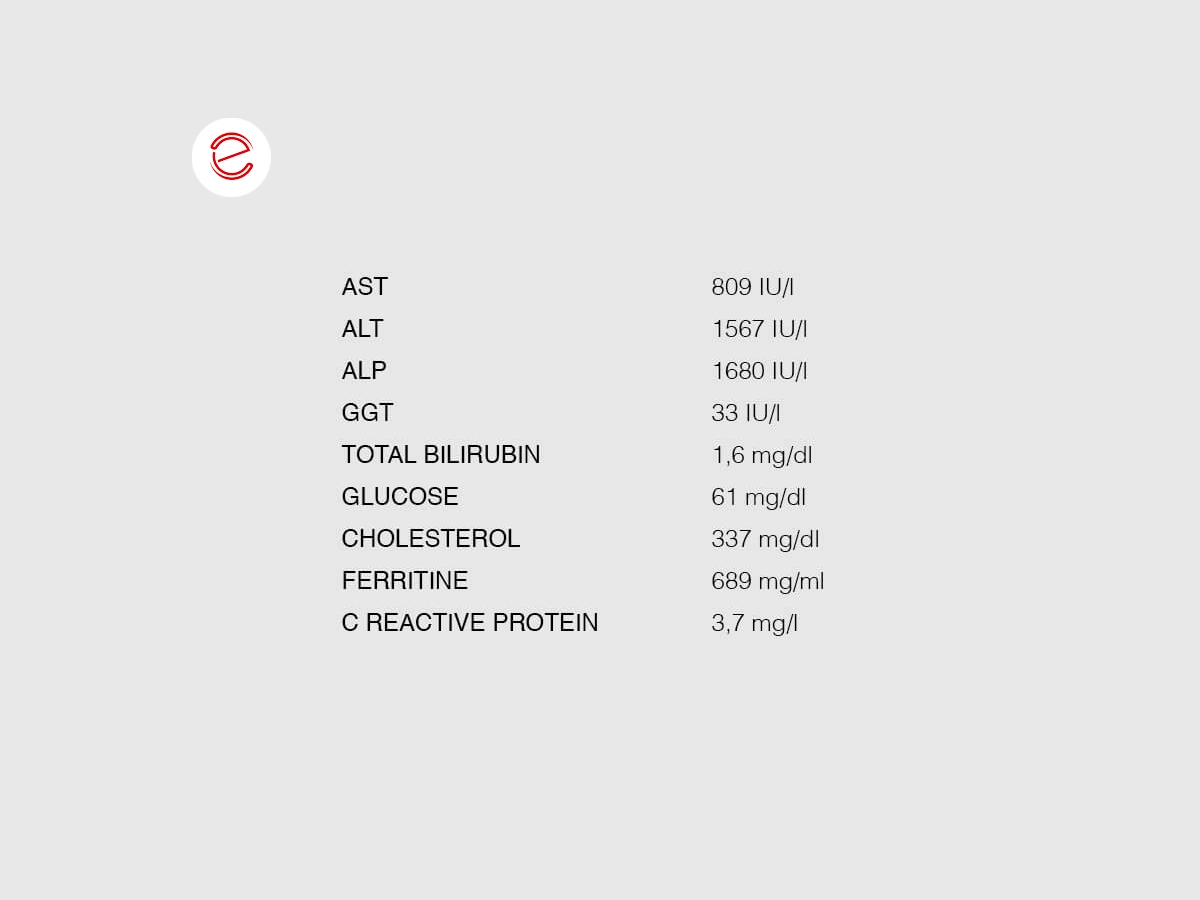
Stool examinations by flotation were performed and showed negative results. The Giardia test gave a negative result. The figure shows the result of the hematobiochemical examination. The hemogram is in the normal range with no major notes.
Ultrasound of the intestine
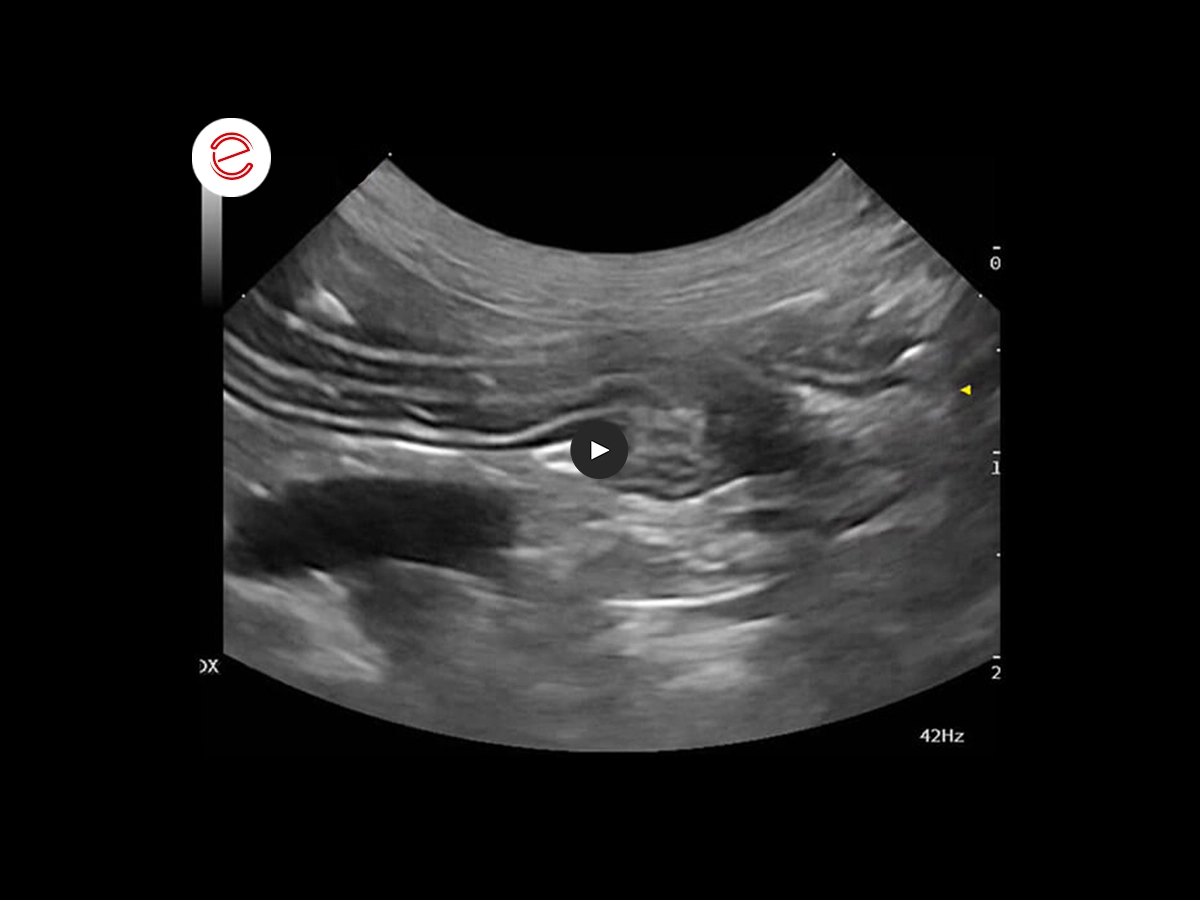
A complete abdominal ultrasound was performed that shows, among other findings, an abnormality of the small intestine.
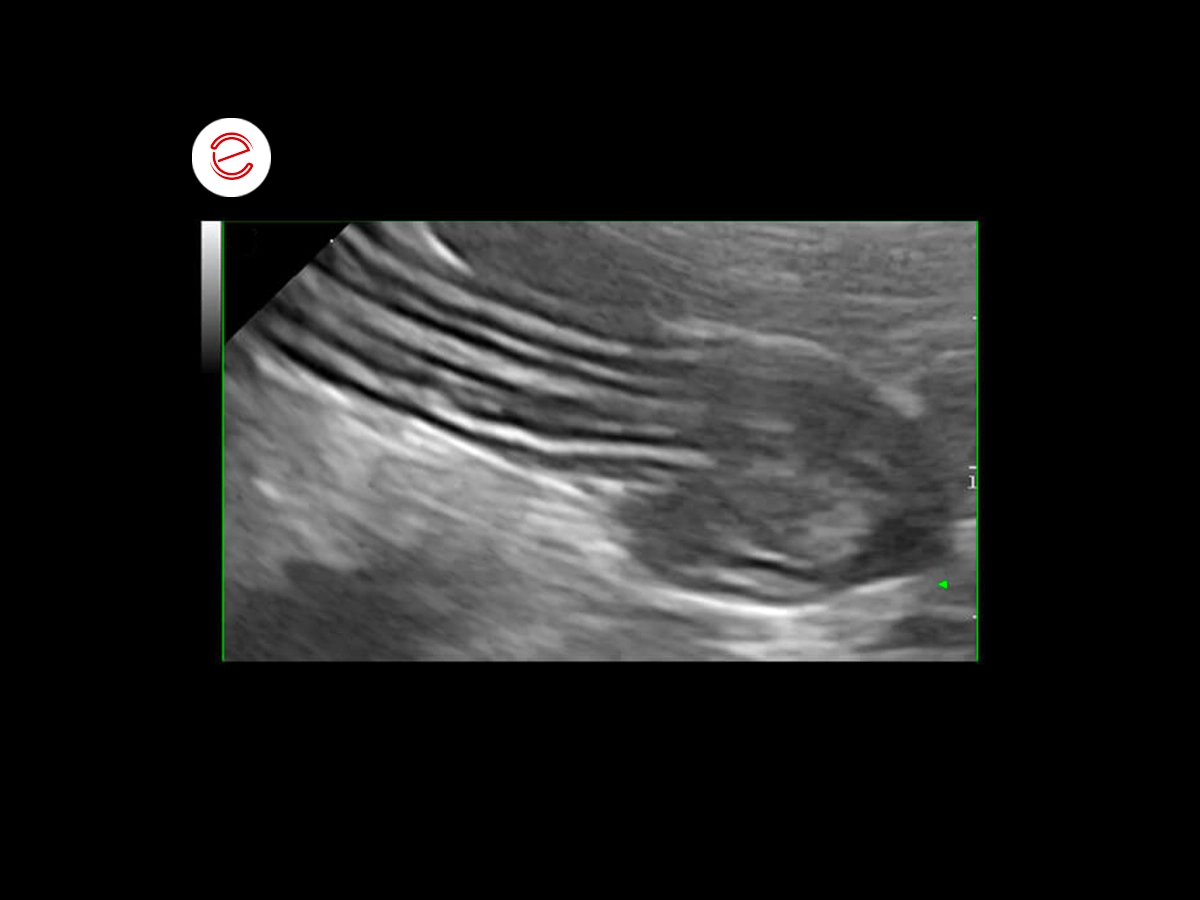
In the ultrasound image, the stratigraphy of the jejunal loop can be appreciated, which has an abnormality.
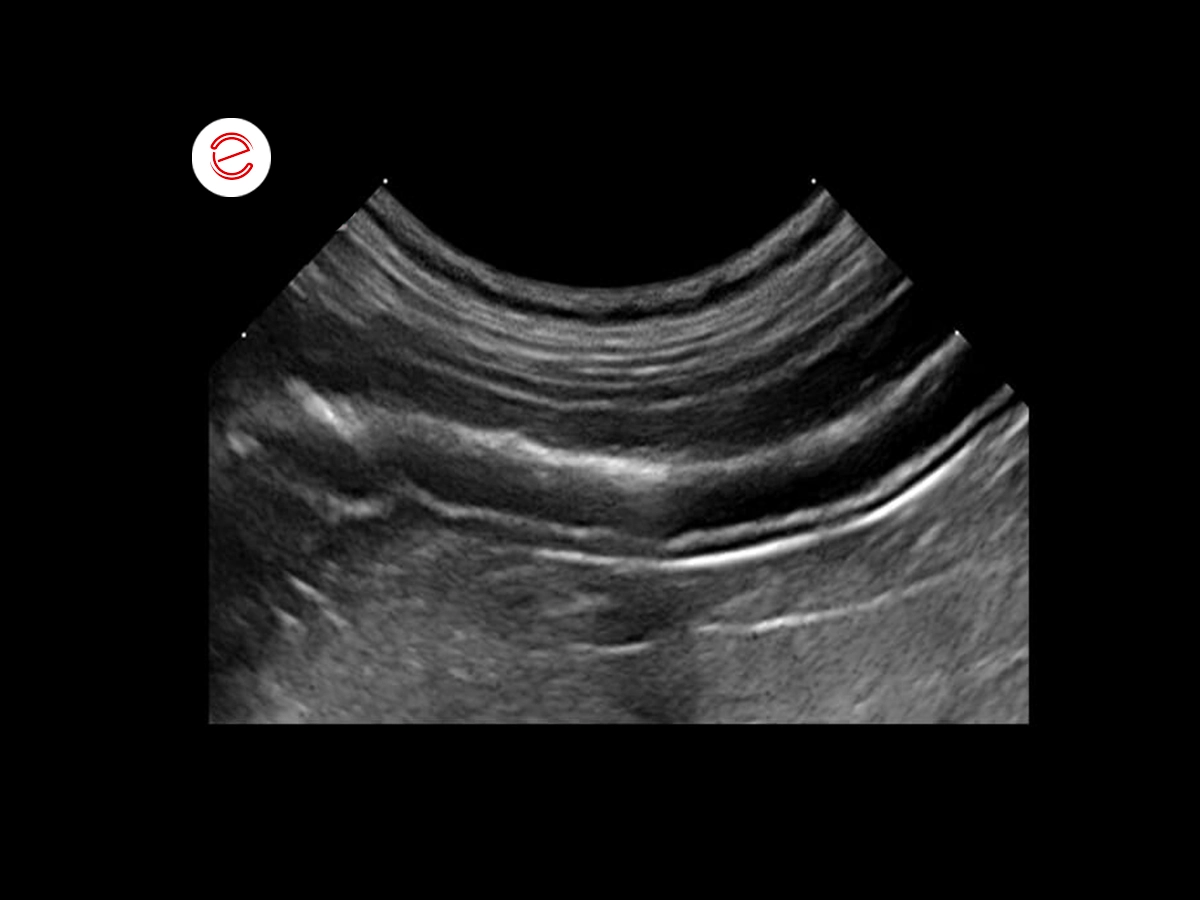
This ultrasound image shows the physiological stratigraphy of a jejunal loop, which its 5 layers.
This ultrasound image shows the physiological stratigraphy of a jejunal loop, which its 5 layers.
- Instead, from the ultrasound examination, in this subject appears a supernumerary layer. The hypotheses that are made as a justification for the supernumerary jejunal layers, in order of possibilities, are:
- infiltration/edema of the mucosa
- infiltration/edema of the submucosa
- hyper-echogenic band dividing the fasciae of the longitudinal muscles from the circular muscles.
When the symptoms resolve, the finding disappears.
Ultrasound examination of the liver was then performed for the following reasons:
- the clinical symptoms lead us to suspect liver disease
- the clinical examination and its signs confirm possible alterations
- laboratory tests point towards a liver problem
- radiographic examination was not helpful.
Ultrasound of the liver
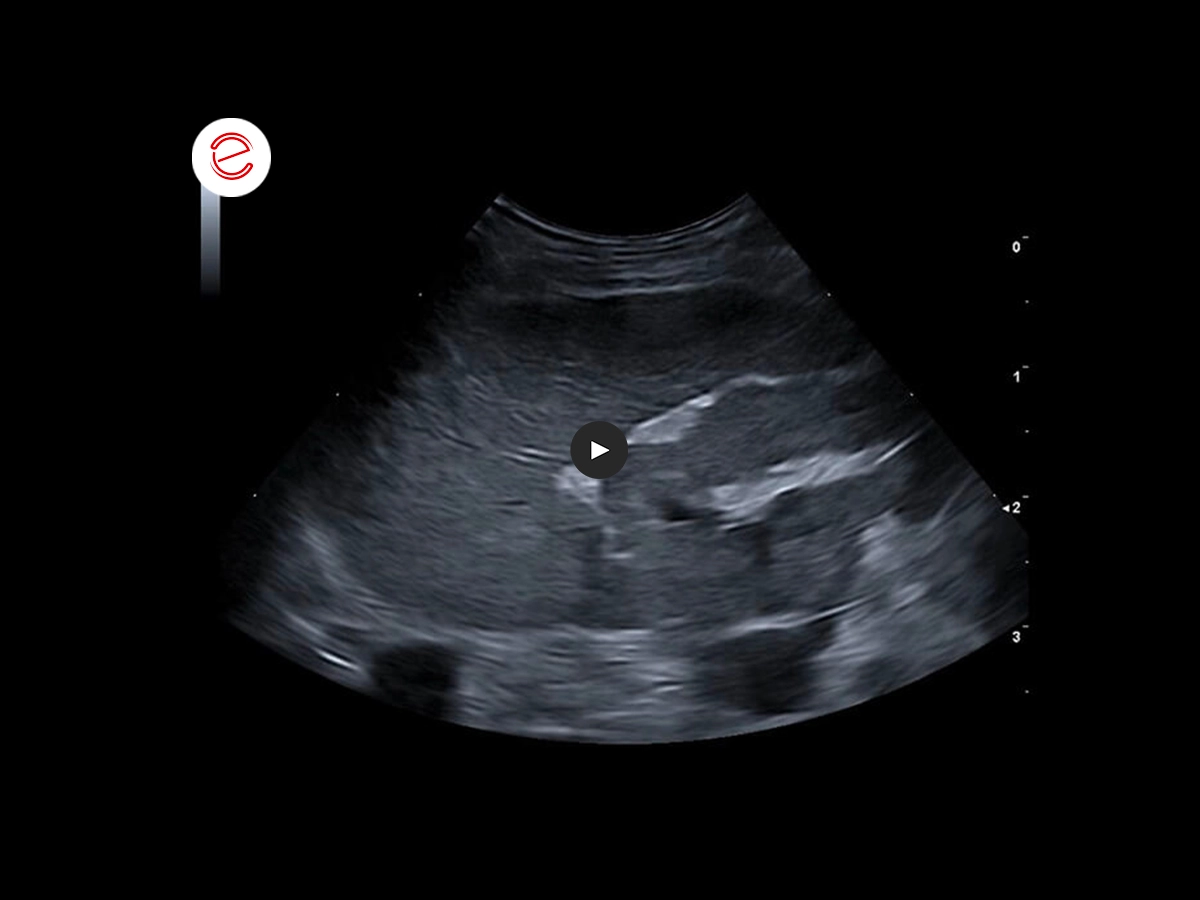
On ultrasound examination of the liver, an increased and nonhomogeneous echogenic pattern was found.
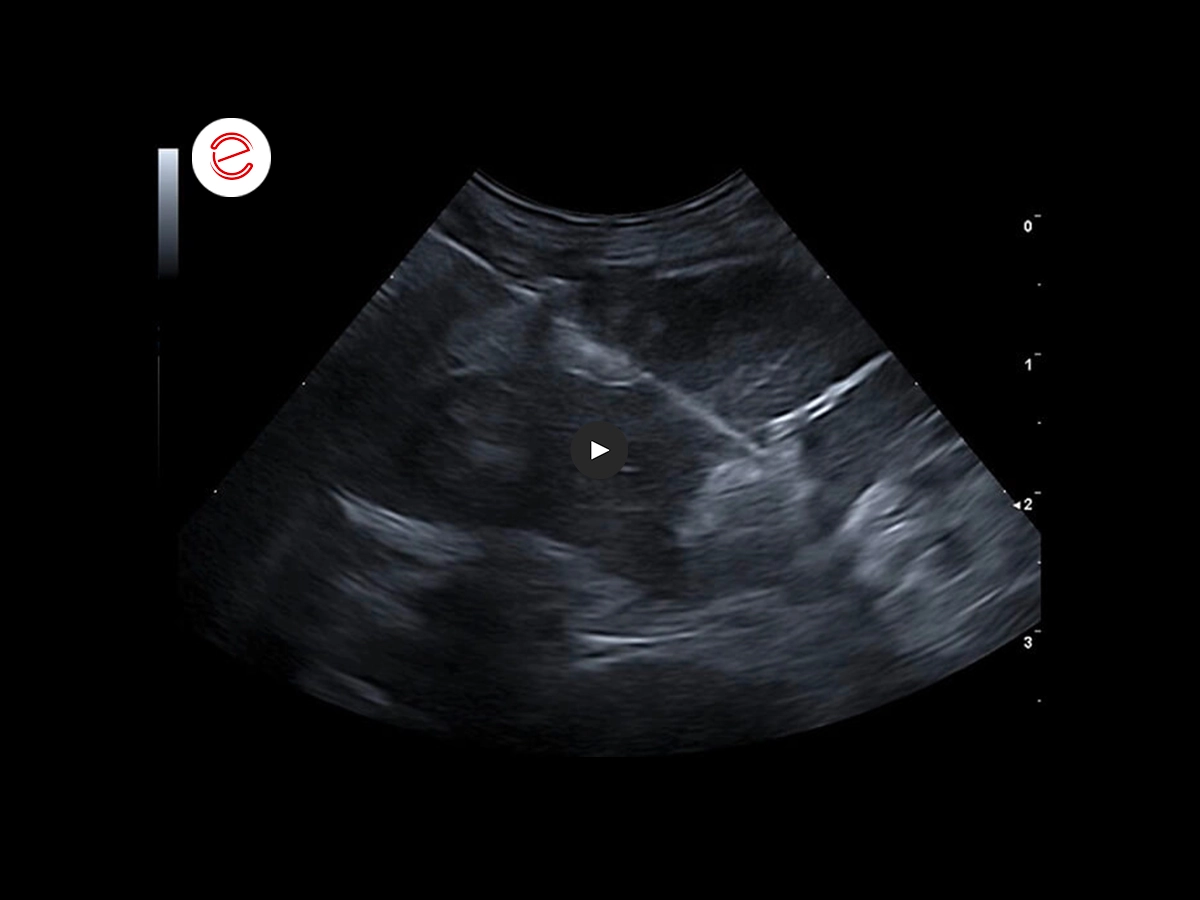
A liver biopsy was then performed.
Histological description:
Examined sections of 3 hepatic tru-cuts and 3 muscular/adipose tissue fragments. The hepatic histoarchitecture is disturbed due to an inflammatory and fibrotic process involving the portal spaces, with formation of fibrous porto-portal bridges and involvement of adjacent hepatic sheets. The infiltrate is characterized by a predominance of small Iymphocytes, fewer, mostly viable neutrophil granulocytes, macrophages phagocytizing cellular debris or brownish-yellow pigment (lipofuscin/hemosiderin), rarer plasma cells, and sporadic eosinophilic granulocytes. The neutrophilic infiltrate involves the adjacent hepatic sinusoids and multifocally the bile ducts, which are moderately hyperplastic. The hepatocytes near the portal spaces are characterized by severe hydropic-vacuolar degeneration and multifocal necrosis. Fibroplasia, fibrosis and neovascularization of the portal spaces, sporadic hematopoietic cells (megakaryoblasts), portal hemorrhages, and hepatocellular regenerative aspects (binucleation and karyomegaly) are evident.
Result of liver biopsy
The finding is related to severe neutrophilic, lymphocytic and necrotizing, chronic-active cholangiohepatitis with porto-portal fibrosis and hepatic regeneration. No morphologically detectable etiologic agents. Correlation to the overall clinicopathologic picture may be useful.
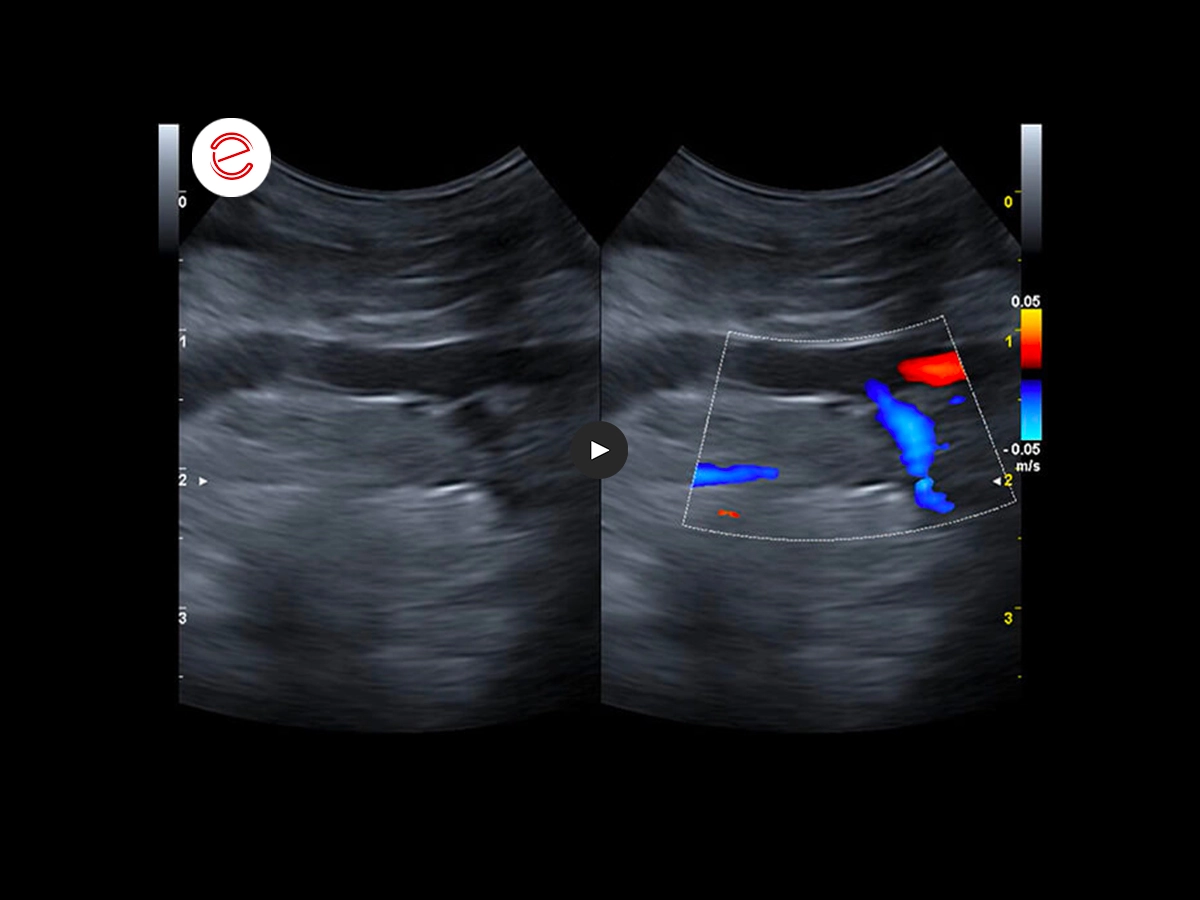
With liver ultrasound, portal vein flows were also assessed and splenic flow was found to be reversed (blue color coding).
A porto-systemic shunt was suspected, and to confirm this, a bubbling test was performed by inoculating a stirred mixture of blood and saline into the spleen. Simultaneously, an initial cardiac evaluation was performed.
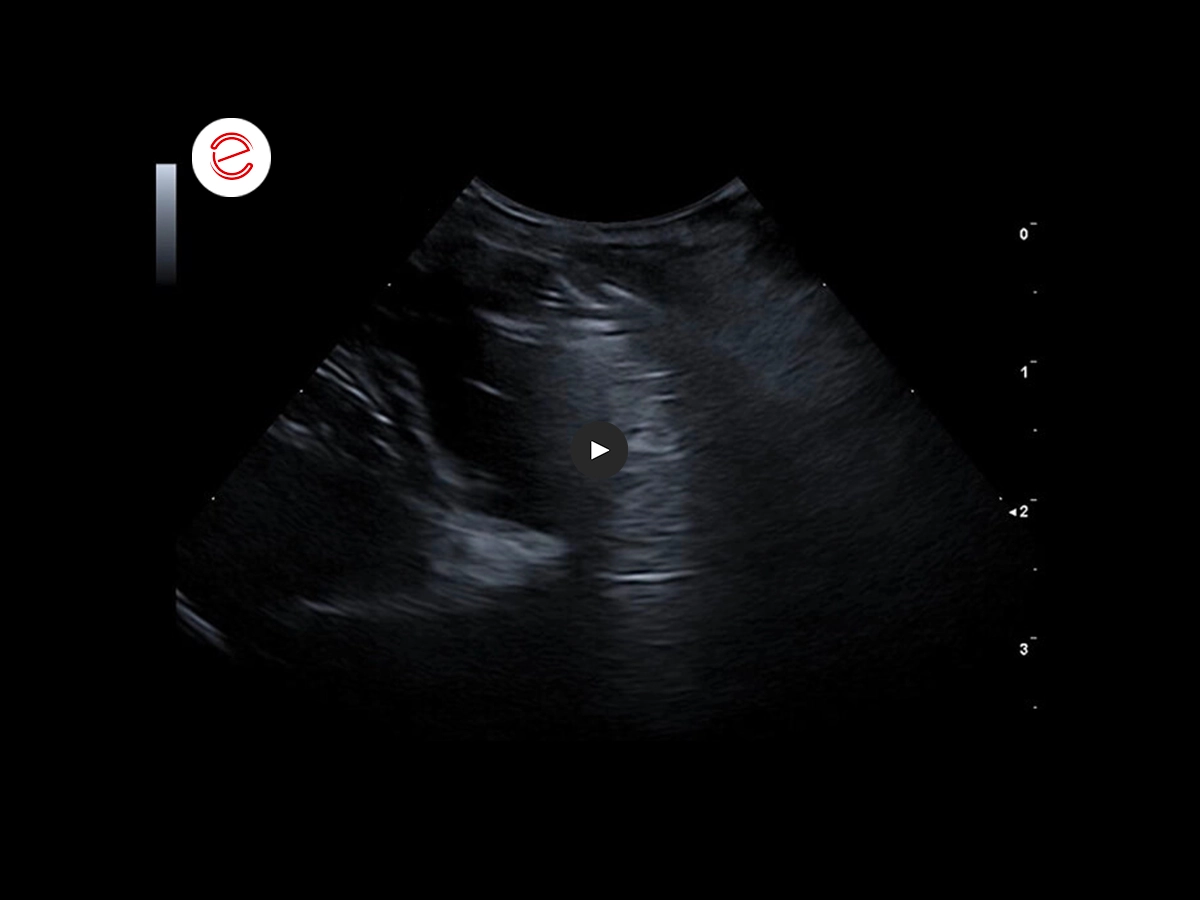
The evaluation, concurrent with the bubbling test, showed small hyper-echogenic bubbles in the right atrium.
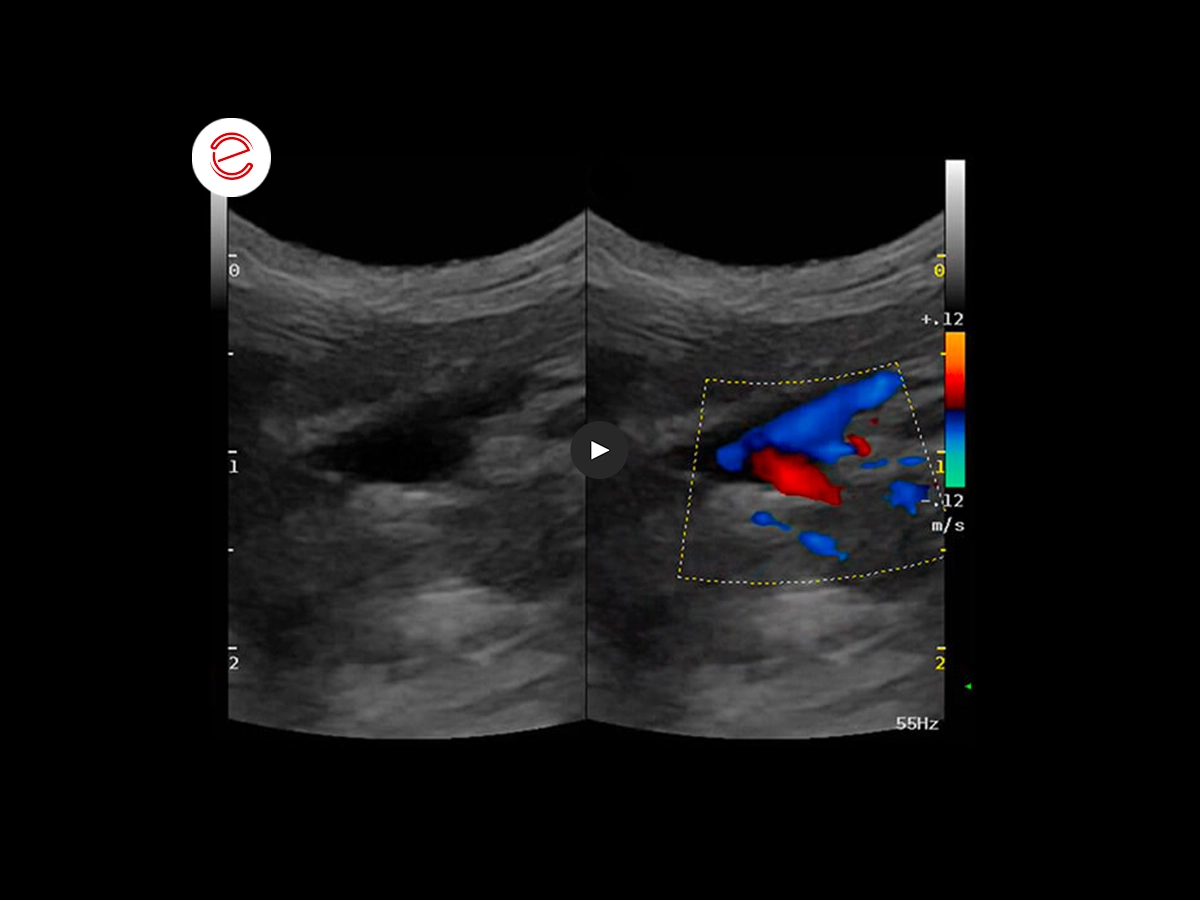
The patient was re-examined after about 10 days. The intestinal alterations have disappeared, the tests are improving but, despite the evidence of the shunt vessel the splenic flow has normalized.
Images were acquired with and MyLab™Omega VET and MyLab™Eight VET systems.
Conclusions and treatment
What could the diagnosis be? Write and share your ideas with us. Send us your hypotheses to: global.marketing@esaote.com
Dr. Giovanni Camali, DVM, Veterinary Clinic, Venice, Italy

MyLab is a trademark of Esaote spa.
Technology and features are device/configuration-dependent. Specifications subject to change without notice. Information might refer to products or modalities not yet approved in all countries. Product images are for illustrative purposes only. For further details, please contact your Esaote sales representative.
Other canine clinical cases you may be interested in
Discover the challenges faced, the examinations performed, the solutions adopted, and the treatments recommended.

MARCH 2025
Adrenal tumors
Carmelo Marco Bruno, DVM, specialist in pathology and clinic of companion animals, accredited with FSA and BOL

MAY 2024
Synovial Sarcoma
Daniel Sáez, DVM
Centro de Diagnóstico Veterinario Vetpoint®, Chile

MARCH 2024
Right atrial Hemangiosarcoma
Angeles Carrión DVM, Accre. AVEPA in Cardiology
Vetocardia, cardiología y ecografía veterinaria, Murcia, Spain
